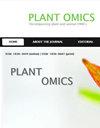圣凯瑟琳濒危特有植物金莲的微繁殖和dna条形码研究
Q3 Agricultural and Biological Sciences
引用次数: 3
摘要
圣凯瑟琳被认为是一个“生物多样性热点”,因为报道的植物物种的地方性很高。在本研究中,濒危特有植物的保护;通过微繁殖和DNA条形码技术对埃及西奈半岛南部圣凯瑟琳地区的金翅菌进行了研究。建立了第一个有效的金莲微繁方案,作为该植物迁地保护的手段。在Murashige和Skoog培养基上分别添加0.54 μM β-萘乙酸(NAA)和2.46 μM N6-(2-异戊烯基)腺嘌呤(2iP)和6-苄基氨基嘌呤(BA)或动蛋白(Kin),建立离体萌发苗的茎尖和节段。两种外植体均以添加3.48 μM Kin的培养基为最佳培养基。对于增殖,BA是最有效的细胞分裂素。在14.7 μM吲哚丁酸(IBA)浓度下,外植体生根率达到100%,而在4.90 μM时生根率最高,为80%。生根苗移栽于温室内,成活率75%。本研究还旨在对金莲进行DNA条形码鉴定,为建立有效的保护计划提供数据库。使用了三种叶绿体DNA标记[核酮糖-1,5-二磷酸羧化酶/加氧酶大亚基(rbcL),成熟酶K (matK)和RNA聚合酶C1 (rpoC1)],所有标记都能成功扩增靶区,但rbcL和matK标记的表现似乎都是物种特异性的。rbcL与matK的相似度最高(99.81%),与同类数据库相似度最高(100%)。本文章由计算机程序翻译,如有差异,请以英文原文为准。
Micropropagtion and DNA-barcoding of the endangered endemic Phlomis aurea plant of Saint Katherine
Saint Katherine is considered a “biodiversity hotspot” because of the high level of endemism of reported plant species. In this study, conservation of the endangered endemic plant; Phlomis aurea of Saint Katherine, Southern Sinai, Egypt, was carried out through micropropagation and DNA barcoding. The first efficient micropropagation protocol for Phlomis aurea was established as a mean of ex situ conservation of the plant. Shoot tips and nodal segments of in vitro germinated seedlings were established on Murashige and Skoog medium supplemented with 0.54 μM β-naphthalene acetic acid (NAA) and 2.46 μM N6-(2-isopentenyl) adenine (2iP) in combination with 6-benzylaminopurine (BA) or kinetin (Kin). The medium supplemented with 3.48 μM Kin considered optimum for both explants. For multiplication, BA was the most efficient cytokinin. The percentage of rooted explants reached 100% at the concentration of 14.7 μM indolebutyric acid (IBA), whereas the highest number of roots was recorded for 4.90 μM, which considered the optimum concentration with a percentage of 80% of rooting. Rooted plantlets were transplanted in the greenhouse with 75% survival rate. The present study also aimed to carry out DNA barcoding of Phlomis aurea for accurate identification to provide a database for establishing an efficient conservation program for the plant. Three chloroplast DNA markers were used [ribulose-1,5-bisphosphate carboxylase/oxygenase large subunit (rbcL), maturase K (matK) and RNA polymerase C1 (rpoC1)] and all were successful in amplifying target regions, however the performance of both rbcL and matK markers seemed to be species‐specific. The similarity percentage was maximum for rbcL (99.81%) and matK (100%) compared to the database of the same species.
求助全文
通过发布文献求助,成功后即可免费获取论文全文。
去求助
来源期刊

Plant Omics
生物-植物科学
CiteScore
1.30
自引率
0.00%
发文量
0
审稿时长
6 months
期刊介绍:
Plant OMICS is an international, peer-reviewed publication that gathers and disseminates fundamental and applied knowledge in almost all area of molecular plant and animal biology, particularly OMICS-es including:
Coverage extends to the most corners of plant and animal biology, including molecular biology, genetics, functional and non-functional molecular breeding and physiology, developmental biology, and new technologies such as vaccines. This journal also covers the combination of many areas of molecular plant and animal biology. Plant Omics is also exteremely interested in molecular aspects of stress biology in plants and animals, including molecular physiology.
 求助内容:
求助内容: 应助结果提醒方式:
应助结果提醒方式:


